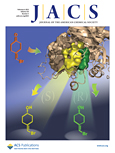JACS: Characterization of streptonigrin biosynthesis
 J Am Chem Soc. 2013 Feb 6;135(5):1739-48. doi: 10.1021/ja3069243.
J Am Chem Soc. 2013 Feb 6;135(5):1739-48. doi: 10.1021/ja3069243.
Characterization of streptonigrin biosynthesis reveals a cryptic carboxyl methylation and an unusual oxidative cleavage of a N-C bond
Xu F, Kong D, He X, Zhang Z, Han M, Xie X, Wang P, Cheng H, Tao M, Zhang L, Deng Z, Lin S.
Streptonigrin (STN, 1) is a highly functionalized aminoquinone alkaloid with broad and potent antitumor activity. Here, we reported the biosynthetic gene cluster of STN identified by genome scanning of a STN producer Streptomyces flocculus CGMCC4.1223. This cluster consists of 48 genes determined by a series of gene inactivations. On the basis of the structures of intermediates and shunt products accumulated from five specific gene inactivation mutants and feeding experiments, the biosynthetic pathway was proposed, and the sequence of tailoring steps was preliminarily determined. In this pathway, a cryptic methylation of lavendamycin was genetically and biochemically characterized to be catalyzed by a leucine carboxyl methyltransferase StnF2. A [2Fe-2S](2+) cluster-containing aromatic ring dioxygenase StnB1/B2 system was biochemically characterized to catalyze a regiospecific cleavage of the N-C8' bond of the indole ring of the methyl ester of lavendamycin. This work provides opportunities to illuminate the enzymology of novel reactions involved in this pathway and to create, using genetic and chemo-enzymatic methods, new streptonigrinoid analogues as potential therapeutic agents.

Copyright © 2016,The Laboratory of Molecular Microbiology at Shanghai Jiao Tong University. All rights reserved.
Add:Science Building, Xuhui Campus, Shanghai Jiaotong University, Shanghai 200030, China. Tel:021-62932943
